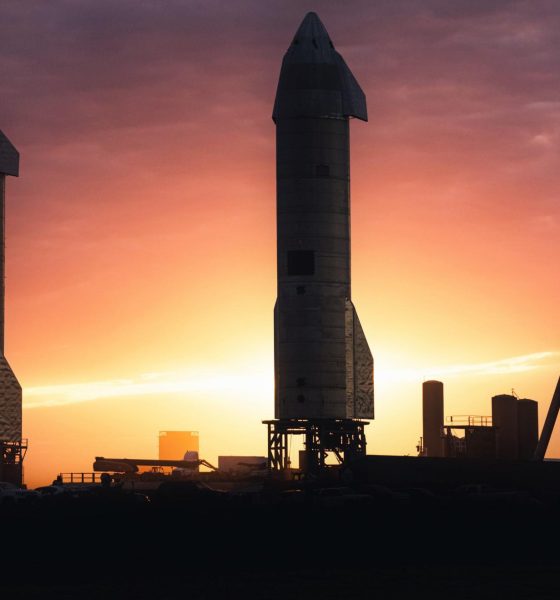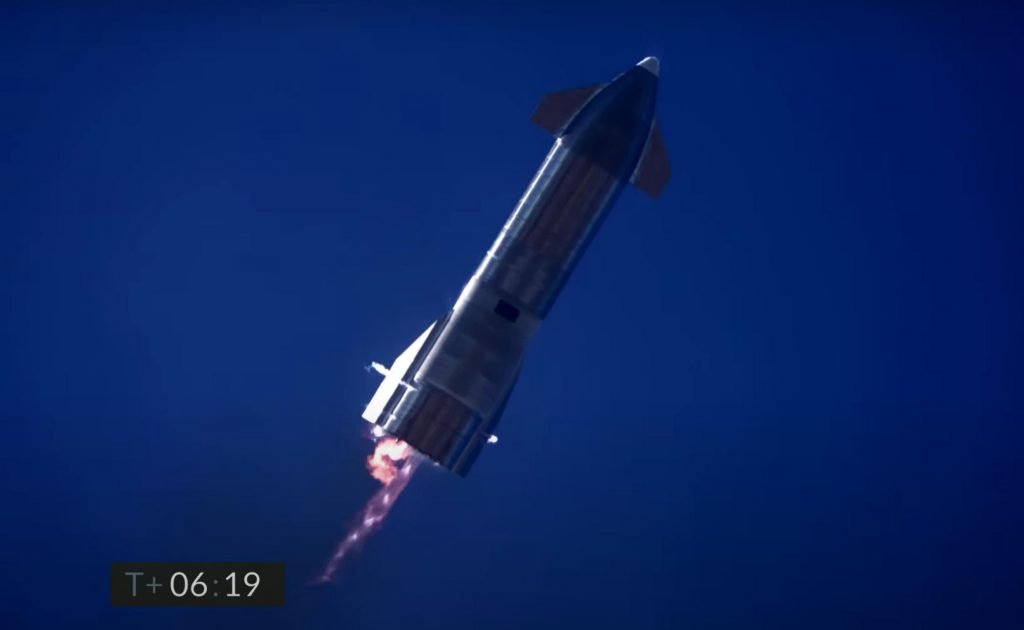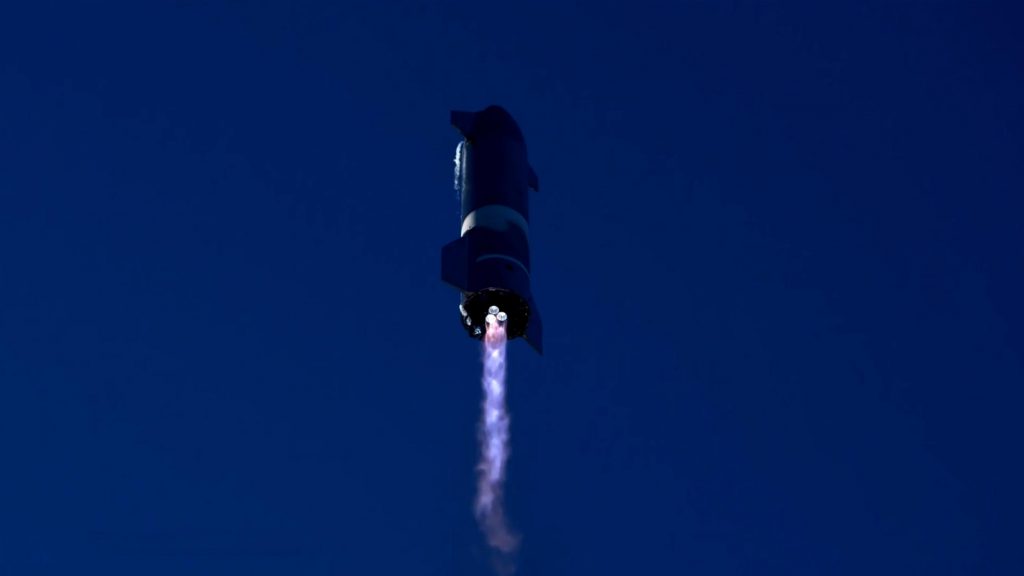

News
SpaceX wants to launch its next Starship ASAP
Contrary to recent comments from CEO Elon Musk, SpaceX appears to be forging ahead at full speed in a bid to launch its next Starship ASAP.
Known as Starship serial number 10 (SN10), the prototype is the latest in a series of four ships SpaceX has ultimately set aside from low(er)-altitude development testing. Starship SN8 – the first functional prototype to reach its full height – debuted on December 8th, 2020, blowing expectations out of the water with a failure mere seconds before the end of a more than six-minute flight test. According to Musk, had a fuel tank remained properly pressurized from start to finish, SN8 could have very well stuck the landing on the first try.
Two months later, after the better part of two weeks of licensing and static fire test delays, Starship SN9 attempted to carry the torch forward but suffered an unrelated failure slightly earlier than SN8’s. One of two Raptor engines failed to ignite for a high-risk flip and landing burn, causing the Starship to impact the ground even more violently than its predecessor. It’s unclear why the ill-fated Raptor failed to ignite or why the engine that did ignite appeared to experience a major failure shortly thereafter but rocket propulsion is extraordinarily difficult – and Raptor is near – or at – the end of that scale.
While SpaceX obviously hasn’t spun around and fixed a complex Starship propulsion issue in a matter of days, Musk eventually revealed his opinion that he, his engineers, or some combination of both “were too dumb” to exploit one obvious way to mitigate the risk of engine failure during flip and landing. That ‘obvious’ tweak: reignite all three of Starship’s available landing engines, not just two.
In theory, with a fast-enough response time, Starship could ignite all three Raptors, perform a supercharged flip from a belly- to tail-down orientation, and selectively shut off one of the engines based on the data from what is essentially a midair static fire. In the event that all three engines are performing nominally, Starship would shut down the least useful engine (i.e. the Raptor with the least leverage) for a gentle two-engine landing burn.
That said, the ship landing burn has a clear solution. My greatest concern is achieving good payload to orbit with rapid & full reusability, without which we shall forever be confined to Earth.— Elon Musk (@elonmusk) February 5, 2021


Impressively, Musk said that SpaceX would implement those changes immediately, attempting the first three-engine reignition as early as Starship SN10’s launch debut. Already at the launch pad when Starship SN9 lifted off, SpaceX revealed plans to launch SN10 as early as February 2021 at the end of SN9’s test flight webcast.
A few days prior to SN9’s ill-fated test flight, Musk had also stated that Starship SN10 would perform a “cryoproof” test and only then have its three Raptor engines installed. Instead, in an apparent change of plans, SpaceX installed Starship SN10’s Raptors – SN39, SN50, and an unknown third engine – from February 5th to 7th.
On Sunday, local longtime resident Mary (aka BocaChicaGal) received an official safety alert from SpaceX, signaling plans for an explosive Starship test of some kind as early as Monday, February 8th. Historically, those overpressure safety warnings have only been distributed when SpaceX is preparing for a Starship static fire attempt. In other words, it’s possible that Starship SN10’s very first test could be a live wet dress rehearsal (WDR) with flammable liquid oxygen and methane propellant. If that WDR goes well, SpaceX could move directly into a one, two, or three-engine static fire.
Of course, as SN9’s lengthy test period rubbed in, Starship is still in the prototype stage and is far from a mature system, meaning that it’s always safer to expect delays than an on-time performance. To be clear, it’s far more likely that SpaceX will perform a familiar “cryo proof” test with non-flammable liquid nitrogen – perhaps hoping to complete a cryoproof and static fire in the same test window.
Either way, stay tuned for updates and follow along with NASASpaceflight’s excellent live coverage in the event that SpaceX really is prepared to static fire Starship SN10 between 9am and 6pm CST (UTC-6) on Monday.

Elon Musk
Elon Musk and Tesla AI Director share insights after empty driver seat Robotaxi rides
The executives’ unoccupied tests hint at the rapid progress of Tesla’s unsupervised Robotaxi efforts.

Tesla CEO Elon Musk and AI Director Ashok Elluswamy celebrated Christmas Eve by sharing personal experiences with Robotaxi vehicles that had no safety monitor or occupant in the driver’s seat. Musk described the system’s “perfect driving” around Austin, while Elluswamy posted video from the back seat, calling it “an amazing experience.”
The executives’ unoccupied tests hint at the rapid progress of Tesla’s unsupervised Robotaxi efforts.
Elon and Ashok’s firsthand Robotaxi insights
Prior to Musk and the Tesla AI Director’s posts, sightings of unmanned Teslas navigating public roads were widely shared on social media. One such vehicle was spotted in Austin, Texas, which Elon Musk acknowleged by stating that “Testing is underway with no occupants in the car.”
Based on his Christmas Eve post, Musk seemed to have tested an unmanned Tesla himself. “A Tesla with no safety monitor in the car and me sitting in the passenger seat took me all around Austin on Sunday with perfect driving,” Musk wrote in his post.
Elluswamy responded with a 2-minute video showing himself in the rear of an unmanned Tesla. The video featured the vehicle’s empty front seats, as well as its smooth handling through real-world traffic. He captioned his video with the words, “It’s an amazing experience!”
Towards Unsupervised operations
During an xAI Hackathon earlier this month, Elon Musk mentioned that Tesla owed be removing Safety Monitors from its Robotaxis in Austin in just three weeks. “Unsupervised is pretty much solved at this point. So there will be Tesla Robotaxis operating in Austin with no one in them. Not even anyone in the passenger seat in about three weeks,” he said. Musk echoed similar estimates at the 2025 Annual Shareholder Meeting and the Q3 2025 earnings call.
Considering the insights that were posted Musk and Elluswamy, it does appear that Tesla is working hard towards operating its Robotaxis with no safety monitors. This is quite impressive considering that the service was launched just earlier this year.
Elon Musk
Starlink passes 9 million active customers just weeks after hitting 8 million
The milestone highlights the accelerating growth of Starlink, which has now been adding over 20,000 new users per day.

SpaceX’s Starlink satellite internet service has continued its rapid global expansion, surpassing 9 million active customers just weeks after crossing the 8 million mark.
The milestone highlights the accelerating growth of Starlink, which has now been adding over 20,000 new users per day.
9 million customers
In a post on X, SpaceX stated that Starlink now serves over 9 million active users across 155 countries, territories, and markets. The company reached 8 million customers in early November, meaning it added roughly 1 million subscribers in under seven weeks, or about 21,275 new users on average per day.
“Starlink is connecting more than 9M active customers with high-speed internet across 155 countries, territories, and many other markets,” Starlink wrote in a post on its official X account. SpaceX President Gwynne Shotwell also celebrated the milestone on X. “A huge thank you to all of our customers and congrats to the Starlink team for such an incredible product,” she wrote.
That growth rate reflects both rising demand for broadband in underserved regions and Starlink’s expanding satellite constellation, which now includes more than 9,000 low-Earth-orbit satellites designed to deliver high-speed, low-latency internet worldwide.
Starlink’s momentum
Starlink’s momentum has been building up. SpaceX reported 4.6 million Starlink customers in December 2024, followed by 7 million by August 2025, and 8 million customers in November. Independent data also suggests Starlink usage is rising sharply, with Cloudflare reporting that global web traffic from Starlink users more than doubled in 2025, as noted in an Insider report.
Starlink’s momentum is increasingly tied to SpaceX’s broader financial outlook. Elon Musk has said the satellite network is “by far” the company’s largest revenue driver, and reports suggest SpaceX may be positioning itself for an initial public offering as soon as next year, with valuations estimated as high as $1.5 trillion. Musk has also suggested in the past that Starlink could have its own IPO in the future.
News
NVIDIA Director of Robotics: Tesla FSD v14 is the first AI to pass the “Physical Turing Test”
After testing FSD v14, Fan stated that his experience with FSD felt magical at first, but it soon started to feel like a routine.

NVIDIA Director of Robotics Jim Fan has praised Tesla’s Full Self-Driving (Supervised) v14 as the first AI to pass what he described as a “Physical Turing Test.”
After testing FSD v14, Fan stated that his experience with FSD felt magical at first, but it soon started to feel like a routine. And just like smartphones today, removing it now would “actively hurt.”
Jim Fan’s hands-on FSD v14 impressions
Fan, a leading researcher in embodied AI who is currently solving Physical AI at NVIDIA and spearheading the company’s Project GR00T initiative, noted that he actually was late to the Tesla game. He was, however, one of the first to try out FSD v14.
“I was very late to own a Tesla but among the earliest to try out FSD v14. It’s perhaps the first time I experience an AI that passes the Physical Turing Test: after a long day at work, you press a button, lay back, and couldn’t tell if a neural net or a human drove you home,” Fan wrote in a post on X.
Fan added: “Despite knowing exactly how robot learning works, I still find it magical watching the steering wheel turn by itself. First it feels surreal, next it becomes routine. Then, like the smartphone, taking it away actively hurts. This is how humanity gets rewired and glued to god-like technologies.”
The Physical Turing Test
The original Turing Test was conceived by Alan Turing in 1950, and it was aimed at determining if a machine could exhibit behavior that is equivalent to or indistinguishable from a human. By focusing on text-based conversations, the original Turing Test set a high bar for natural language processing and machine learning.
This test has been passed by today’s large language models. However, the capability to converse in a humanlike manner is a completely different challenge from performing real-world problem-solving or physical interactions. Thus, Fan introduced the Physical Turing Test, which challenges AI systems to demonstrate intelligence through physical actions.
Based on Fan’s comments, Tesla has demonstrated these intelligent physical actions with FSD v14. Elon Musk agreed with the NVIDIA executive, stating in a post on X that with FSD v14, “you can sense the sentience maturing.” Musk also praised Tesla AI, calling it the best “real-world AI” today.








